Laser Hair Removal in Berlin
Search and Compare the Best Clinics and Doctors at the Lowest Prices for Laser Hair Removal in Berlin

Find the best clinics for Laser Hair Removal in Berlin
With Medijump you can browse 2 facilities offering Laser Hair Removal procedures in Berlin. The cheapest price available is $44 in Hamburg. And for the cheapest price globally, prices start from $3 in India.
Laser Hair Removal in Germany
Price: $ 44
Laser Hair Removal in Hamburg
Price: $ 44
India offers the best prices Worldwide
Price: $ 3
From 18 verified reviews
Alexandra Melendez, 14 August 2020
Dr. Dammert is a very sensitive and good dentist. I've been a scared patient since childhood and he knew exactly what to do. He took enough time to explain every step - and he was always responsive to me. The practice looks very classy and modern. The team around Dr. Dammert is very nice and extremely welcoming. You feel instantly at ease, just like when you visit reluctant dentists - this particular practice gives you - not necessarily the feeling of being at the doctor: the team is dressed in noble dark tones and the classic doctor flair has been blown away. I can this practice and the work of Dr. Dammert warmly recommend. It was a very good experience and I like to remain a patient here. Who knows, soon the addition "fear" patient is missing. Thanks to the team and Dr. Dammert.
From 13 verified reviews
NANCY J., 08 September 2020
I felt in good hands with Dr Omar, who works with great sterility and accuracy. After I was not satisfied with the result, the treatment was carried out again free of charge on goodwill. That made me feel good that they are very interested in treating satisfied patients.
Compare Before & After Photos of _procedure_photos.phpLaser Hair Removal

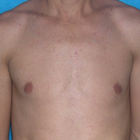
Front view
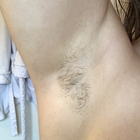
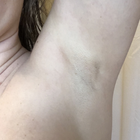
Front view
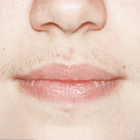
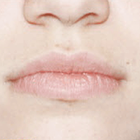
Front view
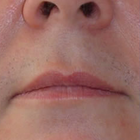
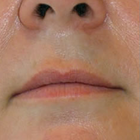
Front view
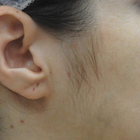
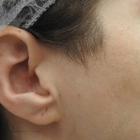
Half-side view

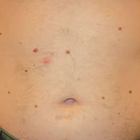
Front view
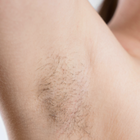

Front view
WHY US?
At Medijump, we're making medical easy. You can search, compare, discuss, and book your medical all in one place. We open the door to the best medical providers worldwide, saving you time and energy along the way, and it's all for FREE, no hidden fees, and no price markups guaranteed. So what are you waiting for?

Free

Best Price

Widest Selection

Risk-Free
What you need to know about Laser Hair Removal in Berlin

Gone are the days of having to constantly shave, pluck or wax unwanted hair from your body. We all know how very time consuming these things are, not to mention the pain you have to endure when you pluck or wax your unwanted hair.
Today, we have several options we can choose from before we can bid goodbye to such undesirable body hair. One of the more popular hairs removal procedures is Laser hair removal. The process involves targeting the hair follicles with laser light in order to damage them and prevent any future hair growth. In this, laser energy gets absorbed by the hair pigment, resulting in damage to the hair follicle. Such a procedure prevents hair growth in the future, and the effect could be permanent in many cases.
Laser hair removal can be done in any part of your body. The most common areas include the bikini area, underarms, legs, back, and face.
What is the cost of Laser Hair Removal in Berlin?
The expenditure for a Laser Hair Removal within Berlin can vary greatly on the basis of numerous aspects. The cost is typically dictated by the expanse of the area undergoing treatment; processes carried out on larger surfaces such as the back or legs could be pricier than those on smaller zones like the upper lip. Other influencing factors include the type of laser technology applied, the count of required sessions, and the credibility and expertise of the clinic or professional administering the treatment.
Considering the wide spectrum of prices across different treatment providers, it's immensely advantageous to undertake comprehensive research and consultations prior to selecting a specific clinic. Some clinics may present package deals for multiple sessions, which could be more economically viable compared to paying for each session separately.
Bear in mind that despite the initial high cost of laser hair removal seeming daunting, the long-term benefits frequently render it a cost-efficient resolution. When you contemplate the ongoing costs of other hair removal options like waxing, shaving, or depilatory creams accumulated over a lifetime, laser hair removal can actually save you both time and money in the grand scheme.
What does a Laser Hair Removal Procedure Involve?
During the procedure, your doctor will press a hand-held laser instrument to the skin area where your unwanted hair is. The laser equipment will be adjusted according to the color, thickness, and location of your hair as well as your skin color. Depending on the laser used, you will be asked to wear eye protection to protect your eyes from the laser beam. A cooling gel or a special cooling device will also be used to protect the outer layers of your skin and lessen the risk of side effects. Your doctor might also apply topical anesthetic to your skin to reduce your discomfort.
Your doctor will then activate the laser; the beam will pass through your skin and to your hair follicles. The heat from the laser beam will now damage the hair follicles; as a result, it will prevent hair growth. You might feel a slight discomfort like a warm pinprick but it will be soothed by the cooling gel or device.
How Long Should I Stay in Berlin for a Laser Hair Removal Procedure?
Laser hair removal is done in small areas of your body like your upper lip usually lasts for only a few minutes. In larger areas such as your back, it might take an hour or more. After your procedure has been completed, you will be given ice packs, anti-inflammatory cream or cold water to ease your discomfort. You can go home right after you have undergone the treatment. Furthermore, stitches are not required in this procedure. You may need to schedule multiple sessions, usually 4-6, spaced four to six weeks apart for optimal results.
What's the Recovery Time for Laser Hair Removal Procedures?
Recovery time after a Laser Hair Removal is typically minimal. Minor redness and swelling may occur but usually resolve within a few hours to a few days. According to health experts, it's essential to avoid sun exposure and use sunscreen to protect the treated area during the recovery period, as skin can be particularly sensitive after treatment. For the first two days, it may seem like the treated area was sunburned. Applying a cool compress and moisturizer will help you with your discomfort. If your face was treated, you will not be allowed to wear makeup if your skin is blistering.
It usually takes 2 to 3 weeks to see any difference. You may schedule your next treatment after 4 or 6 weeks. Note that you need to continuously undergo the treatment until your hair stops growing; this may take 8 to 12 treatments before acquiring full results.
What sort of Aftercare is Required for Laser Hair Removal Procedures?
The heat from the laser will stay in your skin for 24 hours so you need to avoid the gym, sauna, or even taking a hot shower. Doing so will increase the risk of bacteria multiplying and giving you spots. Strictly avoiding the sun before and after your procedure is essential, it is also recommended for you to avoid chemical peels for 2 weeks after your procedure. Applying ice packs to the treated area can also reduce swelling or discomfort.
What's the Success Rate of Laser Hair Removal Procedures?
A Laser Hair Removal technique often has a high success rate, with many people reporting a considerable reduction or full eradication of unwanted hair growth. The patient's skin type, hair colour, and the particular body part being treated are all important variables that can affect how well the operation works. For instance, the technique usually works best on those who have dark hair and pale complexion since this allows for optimal targeting of hair follicles.
Additionally, the Laser Hair Removal's success rate is highly impacted by the practitioner's training and experience. Up to 90% of individuals who undergo the operation under the expert guidance of a qualified specialist will experience a permanent hair reduction. It's always best to consult with a qualified professional at a trusted clinic for personalized advice on the expected outcomes and success rate of laser hair removal for your specific circumstances.
Are there Alternatives to Laser Hair Removal Procedures?
If for any reason, you deem the Laser Hair Removal unfitting, there are alternate routes worth your consideration. These include standard techniques like shaving, waxing, and tweezing, which can be effortlessly performed at home. However, be aware that these options may not ensure enduring solutions to undesired hair growth.
That's where professional treatment alternatives make their entrance. Electrolysis, a process that involves a very slender needle infiltrating each hair follicle to obliterate it using an electrical charge, is one such course of action. Though electrolysis could be more labor-intensive than laser hair removal, it has earned a reputation for its efficacy on all varieties of skin and hair.
Furthermore, there exist depilatory creams designed to chemically disintegrate hair at the surface level of the skin. The outcomes of these creams usually extend beyond the typical duration of shaving effects, but they necessitate routine application. As for any novel skin product, conducting a patch test 24 hours before usage to check for allergic reaction is invariably advised.
Lastly, there's IPL (Intense Pulsed Light) that, despite bearing resemblance to laser hair removal, employs a broad spectrum of high-intensity light influencing the deeper structures of the skin. IPL can additionally serve the purpose of treating skin pigmentation issues as well as acne.
Determining the choice among these alternatives will depend on your specific requirements, lifestyle, and financial plan. It's also vital to discuss your prospective options with a healthcare specialist before settling on a final verdict. They are equipped to dispense comprehensive information and counsel, personalized to your distinct circumstances.
How should you prepare for the Laser Hair Removal Procedure?
Completely getting rid of undesirable hair in certain areas of your body can be quite rewarding and it can certainly boost your self-esteem. Laser hair removal eventually eliminates the need for plucking, shaving or waxing. The common body area where this treatment procedure is done includes armpits, bikini line, upper lip, and legs. Although this treatment procedure is possible in almost all parts of the body, the eyelid area is one exemption.
In choosing the right doctor for your procedure, you have to take note of the following:
- A doctor who specializes in dermatology or cosmetic surgery and has experience with laser hair removal.
- If a physician assistant or a licensed nurse will execute the procedure, make sure that your doctor is available on-site for supervision.
Before your actual treatment procedure, you have to schedule a consultation with your chosen doctor. During your consultation, costs, expected results, and possible risks will be discussed with you. Furthermore, your doctor will also review your medical history and determine whether this procedure is the appropriate treatment for you. You may also be advised to do the following before your scheduled day:
- Avoid sun exposure, typically 6 weeks before your treatment and use sunscreen daily.
- Lighten your skin. Your doctor might also prescribe a skin bleaching cream to lighten your skin if you have a darker skin complexion.
- Avoid plucking, waxing electrolysis 4 weeks before your treatment. These other methods of hair removal might disturb your hair follicle.
- Avoid blood-thinning medications like aspirin or anti-inflammatory drugs.
- Shaving and trimming are recommended a day before your treatment procedure. It gets rid of the hair above the skin that can be burned but at the same time, it leaves the hair shaft intact below the surface.
What are the Potential Risks of Laser Hair Removal?
On the rare occasion, a few individuals could encounter minor side effects like skin irritation and changes in pigment. Skin irritation may present as temporary discomfort, redness and swelling at the site of treatment, generally fading away within hours post procedure. Changes in skin pigmentation could involve skin darkening or lightening. These changes are usually temporary but may turn permanent in rare instances.
Moreover, infrequent but severe risks encompass blistering, scarring, alterations in the skin texture, graying of hair in the treated area, and an unusual surge in hair growth surrounding the treated regions. Keep in mind that these risks more likly escalate if the procedure is conducted by an untrained or novice provider or if post-treatment care guidelines are not adhered to rigorously. For instance, sun exposure weeks leading up to and post treatment can amplify the probability of skin lightening.
Whilst the information presented here has been accurately sourced and verified by a medical professional for its accuracy, it is still advised to consult with your doctor before pursuing a medical treatment at one of the listed medical providers
No Time?
Tell us what you're looking for and we'll reachout to the top clinics all at once
Enquire Now

Popular Procedures in Berlin
Prices Start From $1

Prices Start From $5

Prices Start From $16

Prices Start From $5

Recommended Medical Centers in Berlin for Laser Hair Removal

- Interpreter services
- Translation service
- Religious facilities
- Medical records transfer
- Medical travel insurance
- Health insurance coordination
- TV in the room
- Safe in the room
- Phone in the room
- Private rooms for patients available

- Interpreter services
- Translation service
- Religious facilities
- Medical records transfer
- Medical travel insurance
- Health insurance coordination
- TV in the room
- Safe in the room
- Phone in the room
- Private rooms for patients available

- Interpreter services
- Translation service
- Religious facilities
- Medical records transfer
- Medical travel insurance
- Health insurance coordination
- TV in the room
- Safe in the room
- Phone in the room
- Private rooms for patients available

- Interpreter services
- Translation service
- Religious facilities
- Medical records transfer
- Medical travel insurance
- Health insurance coordination
- TV in the room
- Safe in the room
- Phone in the room
- Private rooms for patients available
Laser Hair Removal in and around Berlin
About Berlin
Berlin is the capital and the largest city of Germany and with over 3.7 million inhabitants; it is the second-most populous city of the European Union after London. It is an alpha city of culture, politics, media, and science. The metropolitan city is also a popular tourist destination, thanks to its rich history, vibrant culture, lively parties, delightful food, and incredible architecture.
Today, Berlin is one of the most popular destinations for medical tourism. The number of medical tourists coming to the city increases each year. Most of them travel from Poland, the Netherlands, France, and the Middle East. Some of the more popular treatments are oncology, cardiology, dentistry, and even tummy tuck. Although the cost is considerably higher than the neighboring countries such as Hungary, medical tourists still come for high-quality treatment with cutting-edge technology. Thousands of medical tourists prefer Berlin for the following reason:
- A patient-focused health-care system with a wide range of treatment.
- Qualified doctors, surgeons, nurses, and other medical practitioners.
- Hospitals equipped with modern technology.
- Higher quality treatments, care, and services.
- Attractive destination and environment, perfect for rejuvenating and recovery.
Popular Areas in Berlin
As a famous tourist destination, Berlin has numerous attractions to see and many things to do. Whether you want to indulge in its culture, eat its food, or have a non-stop party, there will always be something for you.
- Museum Island (Museumsinsel) is a UNESCO World Heritage Site. It is a unique group of five world-renowned museums and it is the perfect place for those who love history and culture. From Ancient Egyptians, Roman Antiquity, the civilizations of the ancient Greek, Christian, and Islamic arts, to 19th Century European Art is available to see in the museums.
- Brandenburg Gate is Berlin’s most famous landmark. This 18th-century neoclassical monument used to symbolize divided Germany during the cold war since the Berlin Wall shut off access to the gate for both East and West Germans. Now, it has turned into a symbol of unity.
- Berlin Wall Memorial is located in the middle of the city where East and West were once divided. The memorial extends along 1.4 kilometers of the former border strip and contains the last piece of the Berlin Wall. The historical remnants and traces of borders are preserved on display so visitors can see and learn more about the history behind it.
- Berlin Cathedral (Berliner Dom) is the biggest church building in Berlin. The architecture and interior will leave visitors in awe. The architect, Julius Raschdorff, used the style of the Italian High Renaissance and Baroque elements. The interior is magnificent with marble columns and golden ornaments in abundance.
- Glass Dome of the Reichstag is an architectural masterpiece constructed on top of the rebuilt Reichstag building. The rooftop terrace and dome offer an outstanding view of the parliamentary and government district as well as Berlin’s skyline. There is also a restaurant on the rooftop.
Weather and Climate in Berlin
Just like the rest of Germany, Berlin enjoys four distinct seasons, making it a year-round destination for tourists. Spring starts around March and ends in May. This season is characterized by the arrival of cherry blossoms and the increase of the temperature. The temperature is around 4.3 °C in early March and will get as warm as 19.4 °C in May.
Summer runs from June to August with an average temperature of 24 °C but can get as high as 30 °C in the hottest days. This season is the peak of tourism because people can enjoy outdoor activities, so prices can be a lot higher than usual.
The months of September and November are Autumn. The weather in this season is similar to summer, which is warm and pleasant. However, the temperature can drop significantly in late November. Tourists usually visit the city during autumn for the Oktoberfest.
Winter in the city can be freezing, cloudy, and wet. The temperature can plummet to -10 °C on the coldest days. The city is generally very festive during this season, thanks to the Christmas spirit.
Getting Around in Berlin
Berlin has two main airports: Berlin Tegel Airport and Berlin Schönefeld Airport. The main international airport is the Berlin Tegel Airport located in the northwest. The airport serves domestic flights to other cities in Germany and international flights to almost every major city around the globe. Berlin Schönefeld Airport is the secondary airport that mainly serves budget airlines such as EasyJet and Ryanair. It is also an international airport that operates domestic and international flights. To get to the city center from both airport, bus, train, taxi or car are available.
To get around Berlin, there are various transportation modes to choose from. The main means of transport in the capital is the U-Bahn system, which comprises 9 metro lines and 173 stations. During peak hours, trains run every two to five minutes and every ten minutes in the evening and on Sundays. Along with the U-Bahn, the S-Bahn system is also one of the main means of transport. It has 15 lines serving 166 stations and has a longer average distance between station than the U-Bahn.
Tourists can also ride the tram and the tram lines mostly operate in the eastern neighborhoods since the tram lines in the former West Berlin were replaced by bus and U-Bahn. The tram lines operate 24 hours a day in some areas.
The bus in Berlin has around 151 lines running every 10 minutes for 24 hours. The buses also replace metro trains during closing hours. Taxis can be found easily enough around the city, with more than 7,000 taxicabs. The taxis can be identified by the beige or ivory color. The base fare is 3.90 EUR and tourists can hail the taxis from the street, by phone, or via an app. Other transportation such as Ferry, car sharing, and e-scooter is also available.
Tourist Visas in Berlin
The citizens of Australia, Canada, Israel, Japan, New Zealand, Poland, the United States, and Switzerland can enter and stay in Berlin for up to 90 days. Since Germany is a member of the European Union, citizens from other European Union countries do not need to obtain a visa to enter. Citizens of other countries need a Schengen Visa. It is advisable to always check the requirements for Germany Visa Application before applying.
Additional Information
- Local Currency: The official currency is the euro (EUR). 1 USD is equivalent to 0.81 EUR.
- Money & Payments: Tourists can find ATMs almost everywhere within the city. Although credit card acceptance is growing, remember that cash is king in the city. Therefore, it is best to always carry some cash. Note that it is considered rude to leave a tip on the table. You should tell the server the total amount you want to pay. For a good restaurant service, a 10% tip is acceptable. For taxis, tourists can tip 10%, rounding to a full euro.
- Local Language: German is the official language. Most people in the city will speak English, in hotels, restaurants, and shops.
- Local Culture and Religion: Over 60% of Berlin’s population has no religious affiliation, while 30% identified as Christian.
- Public Holidays: As most of German, Berlin celebrates major Christian religious holidays such as Easter and Christmas.
Popular Searches
- Plastic Surgery in Thailand
- Dental Implants in Thailand
- Hair Transplant in Thailand
- Breast Augmentation Thailand
- Gastric Sleeve in Thailand
- Gender Reassignment Surgery in Thailand
- Laser Hair Removal in Bangkok
- Botox in Bangkok
- Dermatology in Bangkok
- Breast Augmentation in Bangkok
- Coolsculpting in Bangkok
- Veneers in Turkey
- Hair Transplant in Turkey
- Rhinoplasty in Turkey
- Stem Cell Therapy in Mexico
- Rhinoplasty in Mexico
- Liposuction in Mexico
- Coolsculpting in Tijuana
- Rhinoplasty in Korea
- Scar Removal in Korea
- Gastric Sleeve in Turkey
- Bone Marrow Transplant in India
- Invisalign in Malaysia
- Plastic Surgery in the Dominican Republic
- Tummy Tuck in the Dominican Republic
- Plastic and Cosmetic Surgery in Poland
- Rhinoplasty in Poland
- Hair Implant in Poland
- Dental Implants in Poland
- IVF in Turkey

